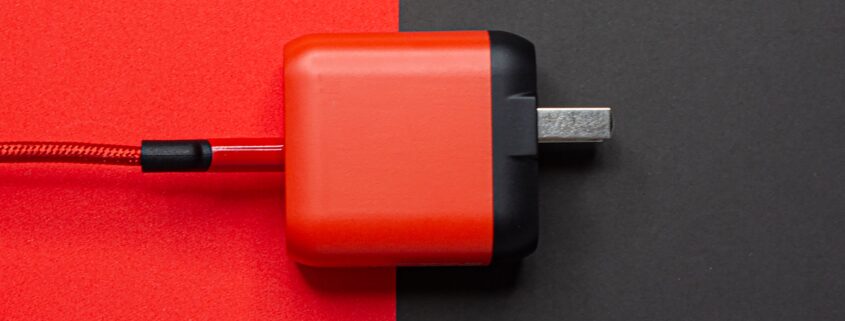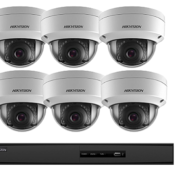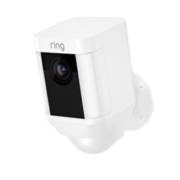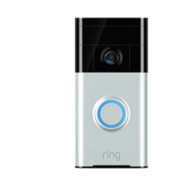Things You Shouldn’t Use Smart Plugs For
Smart plugs are a great way of adding automation to your home. The possibilities of what you can do with them are limited only by the capabilities of the smart plug you’ve selected, the devices you use around your home, and your imagination. You can find hundreds of lists with suggestions on what you can do with your smart plugs. Some are more practical than others, some make a task less efficient for the sake of doing it in a “smart” way, and some are hazardous. Here are a few of the often-recommended suggestions that are things you shouldn’t use smart plugs for.
1. Slow Cookers
There has been a rise in the popularity of slow cookers and multi-cookers in society’s search for faster and easier ways of doing things. Because of this, companies developed and released cookers with delayed start settings. Then, you can put your food in the pot before you leave in the morning and come home to a cooked dinner. All multi-cookers come with a delayed start setting, but older slow cookers don’t. People have found that if their slow cooker doesn’t have delayed start capabilities, they can use smart plugs to achieve the same thing.
Rather than programming the cooker to start at a set time, they program the plug to turn on at that time. Then, if they have a recipe that only needs to cook for six hours but they will be gone nine, they can wait three hours before they have the plug turn on. By the time they get home, their food will be cooked and not three hours overcooked. This sounds like a good idea in theory, but if not executed properly, it’s a safety hazard.
The Danger Zone
One of the top rules of food safety is to keep hot foods hot and cold foods cold. Anything between 40° and 140° F is what food safety experts have termed the danger zone. Bacteria grow the most rapidly in this zone, leaving food susceptible to contamination that could result in food born illnesses. You should never leave perishable foods unrefrigerated for more than two hours. If the temperature is 90° degrees or higher, you should not leave it unrefrigerated for more than one hour.
What does this mean for your slow cooker? All slow cooker recipes take a different amount of time to cook, generally ranging between four to eight hours. If it takes you a half-hour to get to work, you work for eight hours with a half-hour lunch, and it takes you another half-hour to get home, you’ll be gone a total of nine and a half hours. Even if you scratch all the shorter-length recipes from your cookbook, a delayed start still might put your food at risk. When it’s a hot summer day and you don’t leave your AC on when you’re not home since you’re trying to be energy efficient, if you delay-start an eight-hour recipe, that will put it in the danger zone too long.
Many find a way around this by saying they’ll put the food in the crockpot while it’s still frozen. This way, it will stay cold longer However, you should never leave frozen food out to dethaw. The outside will thaw faster, putting it in the danger zone before the inside has thawed. Often, this will put the outside in the danger zone too long.
A Safer Alternative
As a safer alternative, you could get a slow cooker with a keep warm setting. Then, you can cook it immediately to keep it out of the danger zone. When it’s done, it will switch to a temperature that will keep your food safe and warm without overcooking it. If you really want to use your smart plug to program an appliance, you can hook it to your kettle or coffee maker and schedule it to align with your morning routine.
2. Preheating Hair Styling Tools
Another common smart plug recommendation is to program it to preheat your curling or straightening iron so that it’s ready by the time you need it. Most styling tools heat up in a matter of minutes, so unless you’re using it the exact same time every day, you’re just wasting power. Even if you think your schedule is that consistent, things happen. Maybe your alarm didn’t go off, so you’re running late. Perhaps one of your kids requires your attention, and it pulls you off routine. It could be a holiday, so you’re sleeping in, but you forgot to change the timer on the smart plug.
Avoid Fire Hazards
Even if you are always as prompt as the Count of Monte Cristo—on time to the second with no deviations—you might not waste any power by preheating, but you are creating a fire hazard. What is on your bathroom counter in addition to your styling tool? Plastic makeup bottles? Hair products? Hairspray? These may not currently be touching your curling iron, but someone you live with might move something. If your curling iron turns on and it’s touching or close enough to something, it would melt it, possibly start a fire. A sure way to ruin your morning is to walk into the bathroom and find a fire with a melted hairspray bottle at the center of it.
Avoid Electrical Hazards
What if you’re a conscientious person and you use safe practices? You put your styling tool on a heat-resistant pad or stand whenever you’re not using it, and you always clean everything off your counter when you’re finished. The first step is to give yourself a gold medal for being way more organized than most people. Then, consider that heat isn’t the only thing that can start a fire. Various electrical problems could also lead to a fire. It may seem unlikely if you’ve never had problems before. However, the probability is high enough that experts say you should never leave your hair styling tools unattended. Ever.
Here’s where a smart plug really can be helpful with styling tools. Are you often not sure if you remembered to unplug your styling tool? You can put a smart plug in the outlet you use for it. Then, when you’re questioning if you remembered to unplug it, you can remotely turn off the smart plug. Then, you will have peace of mind knowing that your styling tool will be safe until you get home.
3. Everything
Techies get excited about their tech, and many have suggested that smart plugs are so useful that people should use them for everything. There may come a day when smart plugs are the industry standard installed into all home. Right now, it’s not practical to use them for everything. The average US home has 75 electrical outlets. Smart plugs start around $10 each but get more expensive with better quality and more features. If you use smart plugs for everything in your house, it’s going to add up. If you can and want to spend $750+ to put in smart plugs for all of them, go for it. Otherwise, you will want to prioritize. What do you do the most, and what do you find the most inconvenient?
If you’re tired of forgetting to make sure your kid turned off their night light in the morning and finding out it’s been on all day when night comes again, you might be more inclined to use one of your smart plugs for scheduling when it’s on. If you don’t have a problem with over-charging devices, a smart plug you can set to turn off after so many hours of charging might not be at the top of your list. It could be nice having a smart plug on the Wi-Fi router so you can remotely reset it, but you don’t have to do this often enough for an occasional trip downstairs to be worth it. If you were still enforcing an internet curfew like you were before all the kids have moved out, then you’d be using a router smart plug every day. And so forth.
Determine your budget and how many smart plugs you need and go from there. It’s your home. You can customize it to whatever works best for you, your family, your budget, and your safety.










Leave a Reply
Want to join the discussion?Feel free to contribute!